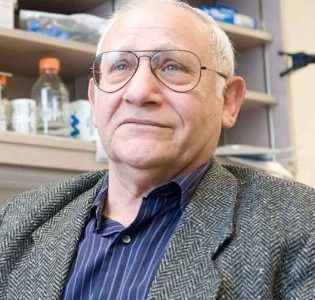With a $50,000 grant from FRAXA Research Foundation from 2002-2004, Dr. Edouard Khandjian and his team at Laval University studied the functions of FMR1 and the related genes FXR1 and FXR2 in frogs.
Read moreAuthor: FRAXA Research Foundation
Fruit Fly Helps Reveal the Secrets of Fragile X

With a $50,000 grant from FRAXA Research Foundation from 2003-2004, Dr. Bassem Hassan and his team at Flanders University researched how Fragile X fruit flies can help further future studies for Fragile X treatment research.
Read moreRole of Experience in Regulating Levels of the Fragile X Protein

FRAXA awarded $29,000 in 2001 and $20,000 in 2000 to Kenneth J. Mack, MD, PhD — Mayo Clinic with Peter K. Todd, MD, PhD, Postdoctoral Fellow. While a professor at University of Wisconsin-Madison, Dr. Mack investigated whether and how FMRP levels are regulated in response to neuronal stimulation in vivo (in live animals). He looked at the effects of seizures and of experience in his experiments. Dr. Mack and colleagues published their findings.
Read moreFMR1 Gene Delivery Using Herpes Simplex Virus Vectors

With $89,000 from FRAXA Research Foundation over 2001-2005, Dr. David Bloom investigated gene therapy for Fragile X. The Bloom lab specializes in the development of gene therapy techniques, and they have succeeded in transferring the Fragile X gene (fmr1) into the brains of live mice, using viral vectors. They studied ways to enhance this process, with the ultimate goal of gene therapy for people with Fragile X.
Read moreDendritic Spine Formation and Fragile X

With a $35,000 grant from FRAXA Research Foundation in 2003, Dr. Jay Brenman and his team at the University of North Carolina utilized the fruit fly (Drosophila) to model disease and examined the fly model of Fragile X in an effort to understand the basic mechanisms of disease.
Read moreDFXR and Synaptic Tagging in Drosophila (Fruit Flies)

With a $135,000 grant from FRAXA Research Foundation from 2001-2003, Dr. Jerry Yin and his team at the University of Wisconsin researched memory formation in Fragile X fruit flies. Dr. Yin started his Fragile X studies at Cold Spring Harbor Laboratory before moving to the Waisman Center.
Read moreUnderstanding the Function of Fragile X Protein in Drosophila

With a $105,000 grant from FRAXA Research Foundation from 2000-2003, Drs. Haruhiko Siomi and Mikko Siomi at Tokushima University researched approaches to characterize the Drosophila homolog of FMR1 and its associated molecules, and to identify molecular pathways that are involved in the cellular processes which are affected by the loss-of-function of Drosophila FMR1.
Read moreFMR1 Repression and the Signals to Chromatin

With a $70,000 grant from FRAXA Research Foundation from 2001-2003, Dr. Assam El-Osta and his team at the Peter MacCallum Cancer Institute studied mechanisms of methylation dependent silencing of FMR1, as well as regulation by histone acetylation/deacetylation.
Read moreMolecular Basis of Increased Seizure Severity in the Fragile X Knockout Mouse
With a $50,000 grant from FRAXA Research Foundation from 2002-2003, Dr. Carl Dobkin and his team at the New York Institute for Basic Research studied the causes for heightened seizure activity in Fragile X mice. Results published.
Read moreIsolating and Characterizing the mRNAs That Bind FMRP

With $60,000 in grants from FRAXA Research Foundation from 1998-1999, Dr. Robert Denman and his team at the New York State Institute for Basic Research explored how FMRP possibly functions.
Read moreTreatment of a Mouse Model of Fragile X Syndrome with MPEP

With a $49,000 grant from FRAXA Research Foundation in 2003, Dr. Linda Crnic at the University of Colorado continued studies of MPEP in Fragile X mice, exploring whether chronic use improves symptoms of Fragile X syndrome without impairing cognitive function.
Read moreStructure of FMRP

With a $68,000 grant from FRAXA Research Foundation from 2001-2002, Dr. Lynne Regan at Yale University studied different protein shapes and how they contributed towards different functions for Fragile X syndrome. Results published.
Read moreProspects For Gene Therapy in the Fragile X
With a $90,000 grant from FRAXA Research Foundation from 2000-2002, Dr. Mario Rattazzi at the New York State Institute for Basic Research explored gene therapy: ways to transfer the FMR1 gene across the blood-brain-barrier in normal rats and mice, and then in FMR1 knockout mice. Results published.
Read moreA Genetic Screen For Dominant Modifiers of Drosophila (Fruitfly) FMR

With a $35,000 grant from FRAXA Research Foundation in 2002, Dr. Kevin Moses and his team at Emory University studied fruit fly eye phenotypes to screen for genes that function in the Fragile X pathway.
Read moreStudies of glutamate receptor trafficking

FRAXA awarded $35,000 in 2001 to Robert Malinow, PhD, Principal Investigator and Julius Zhu, PhD, FRAXA Postdoctoral Fellow at Cold Spring Harbor Laboratory. While he was a postdoctoral fellow in Dr. Malinow’s lab, Dr. Julius Zhu carried out experiments designed to define the set of proteins which are affected in Fragile X syndrome and understand how they function together. In 2002, Dr. Zhu started his own lab at the University of Virginia where he is continuing his Fragile X work with new funding from FRAXA.
Read morePrepulse Inhibition in Fragile X

With a $27,000 grant from FRAXA Research Foundation in 1999, Dr. Alcino Silva and his team examined prepulse inhibition in Fragile X mice and children with Fragile X.
Read moreIdentification of Specific RNA Targets of FMRP

With a $70,000 grant from FRAXA Research Foundation from 1999-2001, Dr. Robert Darnell and his team at Rockefeller University made significant contributions towards understanding how FMRP functions and how the brain is affected without it. Results published.
Read moreTransgenic Mouse Model Studies of Fragile X Syndrome

With a $410,000 grant from FRAXA Research Foundation from 1999-2001, Dr. Eric Kandel and his team at Columbia University researched development of Fragile X mice to further aid future studies of Fragile X research.
Read moreStartle Modulation in Males with Fragile X Syndrome

With a $42,720 grant from FRAXA Research Foundation in 2001, Dr. Elisabeth Dykens at Vanderbilt University showed that startle and prepulse inhibition (PPI) are very much affected in young males are particularly affected by Fragile X syndrome. Results published.
Read moreMolecular Interactions Between FMRP and Protein Translation Apparatus

With a $65,000 grant from FRAXA Research Foundation from 2000-2001, Dr. Claudia Bagni focused on understanding the specific molecular interactions which regulate protein synthesis, and how they are altered in Fragile X. Dr. Bagni has moved from the University of Rome to VIB in Leuven, Belgium. Results published.
Read moreFRAXA Invited to The White House, Celebrating The Children’s Health Act

On short notice, Katie Clapp and Mary Beth and David Busby hurried to attend the January 4th White House ceremony celebrating the bipartisan enactment of the Children’s Health Act of 2000, which boosts federal funding of research on children’s diseases, including Fragile X. This was a rare, unforgettable opportunity to meet both (now, former) President and Senator Clinton in “The Blue Room,” along with several members of Congress.
Read moreTranscriptional Regulation of the Fragile X Gene (fmr1) in the Olfactory Bulb

With a $35,000 in grant from FRAXA Research Foundation, Dr. Justin Fallon and his team at Brown University studied systematic mapping of Fragile X granules in developing mouse brains, revealing a potential role for presynaptic FMRP in sensorimotor functions.
Read moreRole of FMRP in Development and Maturation of Spine Synapses

With a $160,000 grant from FRAXA Research Foundation from 1999-2000, Drs. Menahem Segal at the Weizmann Institute and Katarina Braun at the Leibnitz Institute for Learning researched the development of Fragile X syndrome in a controlled, in vitro test system. Results published.
Read moreNeural Network Model of Working Memory in Fragile X Syndrome

With a $67,000 grant from FRAXA Research Foundation in 2000, Dr. Mina Johnson-Glenberg at the University of Wisconsin researched how long-term and working memory was affected in individuals with Fragile X syndrome.
Read moreMelatonin Clinical Trial in Fragile X

With a $60,000 grant from FRAXA Research Foundation from 1998-1999, Dr. Randi Hagerman and her team at the University of California studied the effects of different compounds on individuals with Fragile X syndrome, focusing specifically on melatonin. Results published.
Read more
